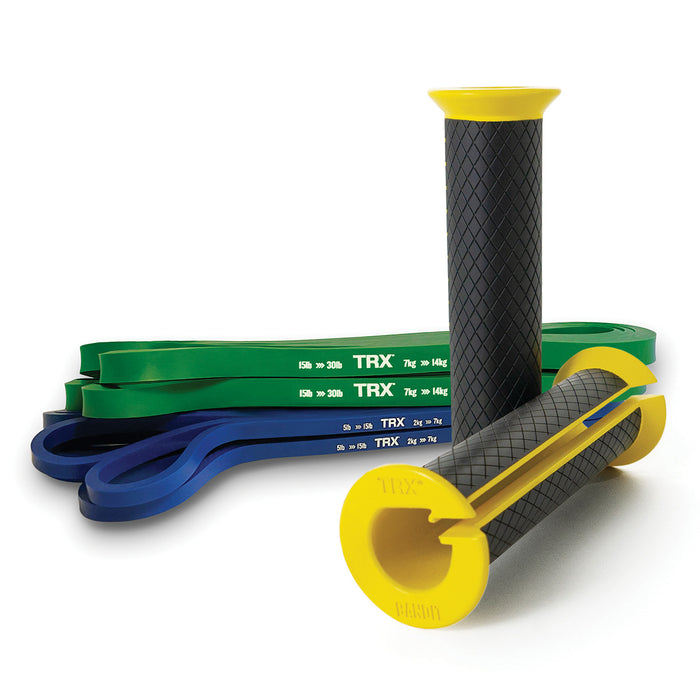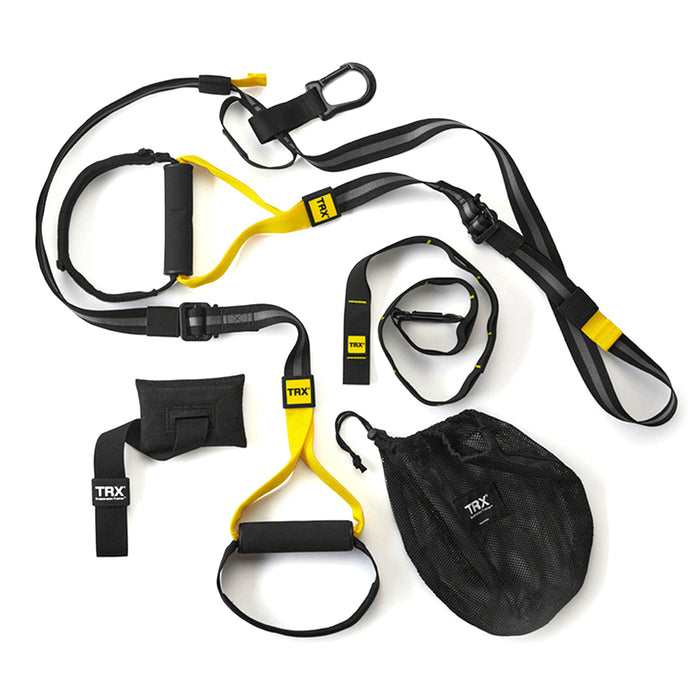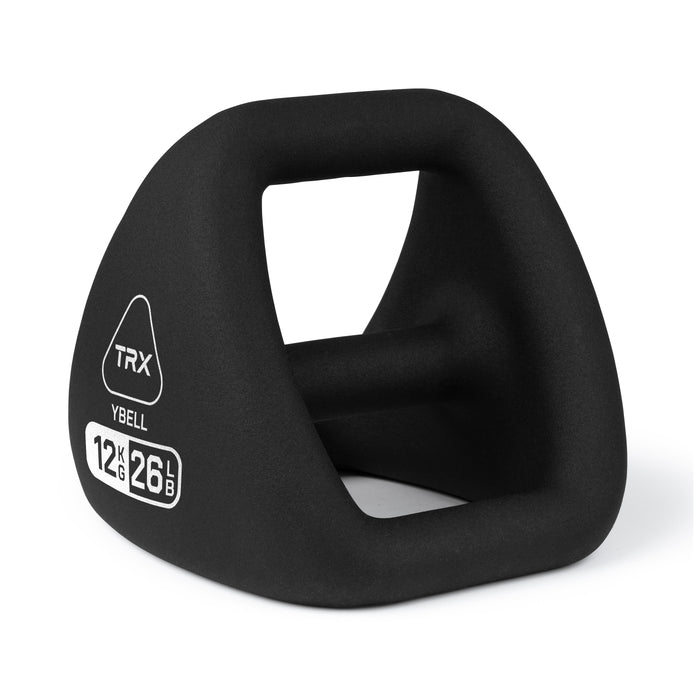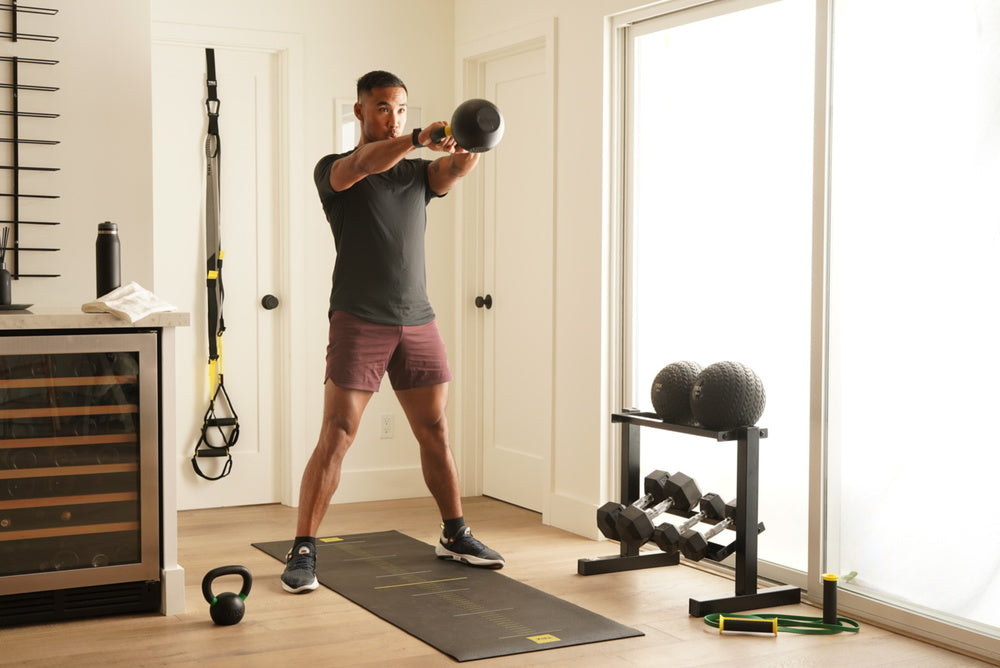A lot of time is spent in the gym building muscles that can be seen in the mirror such as the pecs, quads, arms, and everybody’s favorite…6-pack abs. However, neglecting the back muscles can lead to serious imbalances, decreased performance levels, and even injury.
The largest of the upper body muscles is the latissimus dorsi, otherwise known as the “lats”. This is one of the most important areas to strengthen if you want a stronger back. That’s why we’re going to cover some of the best lats exercises you can do today. Let’s get started!
TLDR:
On the go? Here are the only exercises you need to build your lats properly:
- Pull-Ups
- TRX Rows
- Cable Rows
- Lat Pulldown
- TRX Swimmer Pull
These are the top lats exercises that you can add to your workout split. You can find other movements like the ones above at the TRX App: 
What are the Lats?
The lats are large, triangular-shaped muscles located in the back of the body. The lats originate from the lower back, ribcage, iliac crest (hip bone), and thoracolumbar fascia (connective tissue in the lower back) and taper to insert on the humerus (upper arm bone).
What Do Lats Do?
The primary function of the lats is to stabilize the spine while providing strength to the shoulders and arms. Specifically, they play a critical role in the following functions:
- Shoulder Adduction: The lats are the primary muscle responsible for shoulder adduction, which is the movement of the arm toward the midline of the body. This is the main movement involved in pull-ups, chin-ups, and rows.
- Shoulder Extension: The lats also play a role in shoulder extension, which is the movement of the arm behind the body. This movement is important in activities such as swimming and throwing.
- Scapular Retraction: This happens when your shoulder blades move towards your spine. This movement is important for maintaining stability in the shoulder joint, especially during activities such as lifting and pressing.
- Spinal Stabilization: As mentioned above, your spine stays stable thanks to the lats. This is important for preventing injury and maintaining good posture. By providing support to the spine, the lats can reduce the stress placed on the lower back and prevent the development of back pain.
- Respiration: By raising the lower ribs, the latissimus dorsi muscle also assists in forced respiration (1).
Benefits of Exercising Lats
By now, you can probably see that a lot of movements are extremely dependent on the lats. As you exercise this muscle area, you’ll see some of the following benefits show up:
- Improved Posture: Strong lats can improve posture and reduce the risk of back pain by supporting the spine and reducing the stress placed on it. This can be important for individuals who spend long hours sitting at a desk because it can help prevent the development of poor postural habits.
- Increased Upper Body Strength: The lats play a critical role in upper body movements like pull-ups, chin-ups, and rows. By training the lats, you can exercise your entire upper body and build strength in all the major muscle groups. This can translate to improved performance in activities such as weightlifting, bodybuilding, and athletics.
- Improved Aesthetics: Training the lats creates a “V-taper torso” which contributes to an aesthetically pleasing physique. A well-defined and toned latissimus dorsi can create the illusion of a smaller waistline and give the appearance of a more muscular back. This can be especially important for bodybuilders, who aim to achieve a balanced and proportionate physique.
- Improved Performance in Sports: In many sports, such as gymnastics, swimming, and rock climbing, the lats play an important role in upper body movements and stability. The lats are also an essential muscle group for transferring power from the legs to the upper body. This can be useful for running speed, throwing, punching, hitting, rowing, and more!
- Shoulder Stability: Engaging the lats properly can help retract the shoulder blades, which creates a more favorable and stable space for the head of the humerus to move inside the shoulder capsule. Lat engagement during pushing and pulling movements can enhance this stability and movement.
The Best Lat Exercises
Now that we've explored the importance of developing your lats, let's dive into some of the most effective exercises to target this crucial muscle group. (Want to discover which lat exercises would work best for your specific body type and fitness level? Our quick assessment quiz can create a personalized training plan just for you!) Whether you're training at home or in the gym, these proven movements will help you build that coveted V-taper and enhance your overall back development.
Take Our Training Quiz
10. Pull-Ups

Pull-ups are one of the most efficient exercises you can do without needing much equipment. As long as you have a bar, you’re good to go. Not only does it strengthen your entire back, but it also builds your shoulders, arms, chest, and core. Here’s how to do the exercise:
- Hang from a bar with hands in an overhand grip, slightly wider than shoulder-width apart.
- Initiate the pull with your back (the lats!), depressing your lats as far as you can without bending the elbows.
- Once the shoulders are fully depressed, bend your elbows until your chin raises above the bar.
- Keep the torso straight and stiff, lower to the starting position in a controlled manner, and repeat.
9. Cable Row

There are few pull exercises that target your back muscles as effectively as the cable row does. When you pull the cable, you activate your latissimus dorsi, the erector muscles, the rhomboids, and even your lower trapezius. Here’s how to do a cable row:
- Sit on a cable row machine and place your feet solidly in front of you.
- Use your legs to pull the cable into position, and lean back slightly, keeping the core engaged and spine neutral.
- Initiate the pull with your back, and then follow through by bending your elbows and bringing the handles to your ribcage.
- No movement should occur in the hips and torso.
- Only pull from the elbows and behind the shoulder blades.
- Pause, then slowly extend your arms to the starting position.
8. Deadlifts

The barbell deadlift is commonly associated with building stronger hamstrings and glutes. However, it can also strengthen your lats quite effectively. Just look at the mechanics of the exercise: when you lift or lower the barbell, the weight is suspended from your arms, requiring your back muscles to engage in the movement. Do not underestimate the deadlift potential for developing a strong and robust back. Here’s how you do a barbell deadlift:
- Begin by standing over a barbell.
- Bend from the knees and hips, and grasp the barbell at a width slightly wider than shoulder width.
- To fully engage the lats and protect your spine and shoulders, pretend to bend the bar before lifting, feeling the chest open and the spine reach a neutral position.
- Shins should be vertical and hips pressed backward.
- Pressing firmly through your feet and keeping the bar close to your body, lift the barbell off of the floor and extend the hips in an upright position.
- Drive the hips backward and lower the barbell to the starting position.
7. Barbell Rows

Barbell rows focus on maximizing upper back pull strength, making it a great exercise for putting on muscle mass around and on your lats. Here’s a step-by-step guide on how to do barbell rows:
- Begin by placing hands, about shoulder-width apart, in an underhand grip.
- The head is in alignment with the spine, and the back is in a neutral position.
- Slightly lift the bar off the floor and maintain a solid hinged position at the hips.
- Keeping the core tight and braced, engage behind your shoulder blades, and smoothly pull the bar close to the base of your ribcage.
- Without any additional movement at the hips, lower the bar back into the starting position and repeat.
6. Lat Pull-Downs

Lat pulldowns are sometimes considered a close cousin to pull-ups due to their similar movements. However, it has earned its own recognition because lat pulldowns isolate and target the lats much more effectively. Since you don’t have to worry about your grip or coordinating your lower body, the lat pulldown allows you to concentrate specifically on your lats, ensuring each repetition is completed with a strong mind-muscle connection. To do a lat pulldown:
- Sit in a lat pulldown station or beneath a cable pully system.
- Grasp the bar with a grip that is slightly wider than shoulder-width and lean back slightly.
- Like the pull-up, initiate your pulling movement with your back, depressing your shoulders as far as possible before bending your elbows and lowering the bar down slightly past your collarbone, keeping the torso strong and stable.
- With control, slowly return the bar to the top of the movement. You can also experiment with different grips—narrow, underhand, and neutral—for a variety of ways to target the lats.
5. Dumbbell Rows

Dumbbell rows are one of the first variations novice lifters learn. Due to its simplicity, it’s easy to adopt and incorporate into pull-day workouts. If you want to really incorporate the lats here, make sure you’re stretching your muscles properly at the bottom of the motion.
- Begin with one hand on a bench and feet planted firmly on the ground.
- Hips should be in line with the shoulders with the neck and spine in a neutral position.
- Keeping hips and shoulders square, engage behind the shoulder blade of the active side, and leading with the elbow, raise the dumbbell toward your ribcage.
- Return the dumbbell to the starting position and repeat.
4. Landmine Rows

The landmine row shares similarities with the traditional barbell row, but the angle of your pull is what sets it apart. By anchoring the barbell behind you, the landmine row allows for a greater contraction of your lat muscles. And due to the anchoring of the barbell, there is less room for cheating, so you can focus on squeezing your lats with greater precision. Here’s how to do a landmine row:
- Get set with your feet about shoulder-width apart, and hinge at your hips, facing toward the weighted end of the bar.
- Attach a v-bar to the weighted end of the barbell, and lift the bar into a hinged position with your legs.
- Once this strong-neutral hinged position is established, engage behind the shoulder blades, and pull the barbell toward your chest. Pause, and return to the starting position.
3. Negative Pull Ups

Negative pull-ups are a great progression exercise that focuses on you lowering yourself from the bar rather than lifting yourself up. The lats are involved because they keep your weight stable during the movement down. But, that’s not the only muscle group involved. Negative pull-ups also target your chest, arms, shoulders, and core. If you want to do negative pull-ups, here’s how to do so:
- Using a box or bench, begin with your hands slightly wider than shoulder-width apart on an overhead bar.
- Jump into a bent arm hang.
- While keeping the torso stiff and in proper alignment, slowly lower to the bottom of your hang. This should take about 3-5 seconds.
- Step onto the box, jump into your bent arm hang, and repeat.
2. TRX Swimmer Pull

The TRX Swimmer Pull requires you to use the TRX Suspension Trainer since this exercise largely involves you working against your body weight. Because you’re not using your elbows during the movement, it’s great at developing your shoulder, back, and core while incorporating functional movements you use every day.
- With the TRX Suspension Trainer mid to fully lengthened, begin by standing facing the anchor point. Palms are down slightly in front of the thighs, and the feet are in an offset foot stance.
- Initiate the movement by bending the back knee and slowly lowering to a strong plank position.
- With a slight bend in the elbows, pull your hands down and back as your body raises to the initial starting position.
If you don't have a suspension trainer, pick one up today.
var productTitleEls = document.querySelectorAll('#a16f4b3de-afac-4efa-b975-c0a3ec566e43 .product-item > p') var largestHeight = 0; productTitleEls.forEach(el => { console.log({ el }) var height = el.clientHeight; if (height > largestHeight) { largestHeight = height; } }) productTitleEls.forEach(el => { el.style.height = largestHeight.toString() + 'px'; })1. Pushups

Believe it or not, pushups–arguably the most simple exercise next to crunches–are one of the best ways to build your lats. While your chest is used to push yourself up, your back is used to lower yourself to the ground. And if you do a deep pushup, more stress is placed on the back, further strengthening the muscles.
- Begin in a strong plank position with your hands directly beneath your shoulders and heels driving back.
- Lower your body down to the floor while maintaining one straight line.
- To properly engage your lats, pretend you are pulling the floor apart between your hands while simultaneously opening two jars away from one another as you press to the top of the movement.
- This increased lat engagement will help stabilize your shoulders and give you more strength and power in your push-ups.
Sample Lat Workouts
After a brief cardiorespiratory and basic shoulder mobility warm-up, begin with a warm-up set of 12 reps of each exercise. Increase the load and complete two more sets of 8 repetitions. Ensure a minimum of 30 seconds of rest before completing the next set. Try to target this large muscle group at least two times a week.
Lat Workout #1:
- Deadlifts
- Barbell Rows
- Lat Pull Downs
- Landmine Rows
- Negative Pull-Ups
Lat Workout #2:
- Pull-Ups
- Cable Row
- Lat Pull Down
- Push-Ups
- TRX Swimmer Pull
Both of these workouts are great for targeting your lat muscles. Combine this with our 15-minute TRX Upper Body Workout to see the best results!
Start Working Out Your Lats Today
Lats support us every day, whether you notice it or not. On the other hand, injuring your lats can be detrimental to your upper body’s overall health. To keep your lats healthy, make sure to consistently exercise them and warm up thoroughly before to reduce your chance of injury.
While we only cover ten lats exercises here, go to the TRX App to see the different ways you can build a strong back today. Get 30 days free when you sign up!
Sources:
-
Orozco-Levi, M, et al. "Activity of Latissimus Dorsi Muscle during Inspiratory Threshold Loads." The European Respiratory Journal, vol. 441, no. 5, 1995, https://doi.org/10.1183/09031936.95.08030441.
- McGill, Stuart M et al. “Muscle activity and spine load during pulling exercises: influence of stable and labile contact surfaces and technique coaching.” Journal of electromyography and kinesiology: official journal of the International Society of Electrophysiological Kinesiology vol. 24,5 (2014): 652-65. doi:10.1016/j.jelekin.2014.06.002







